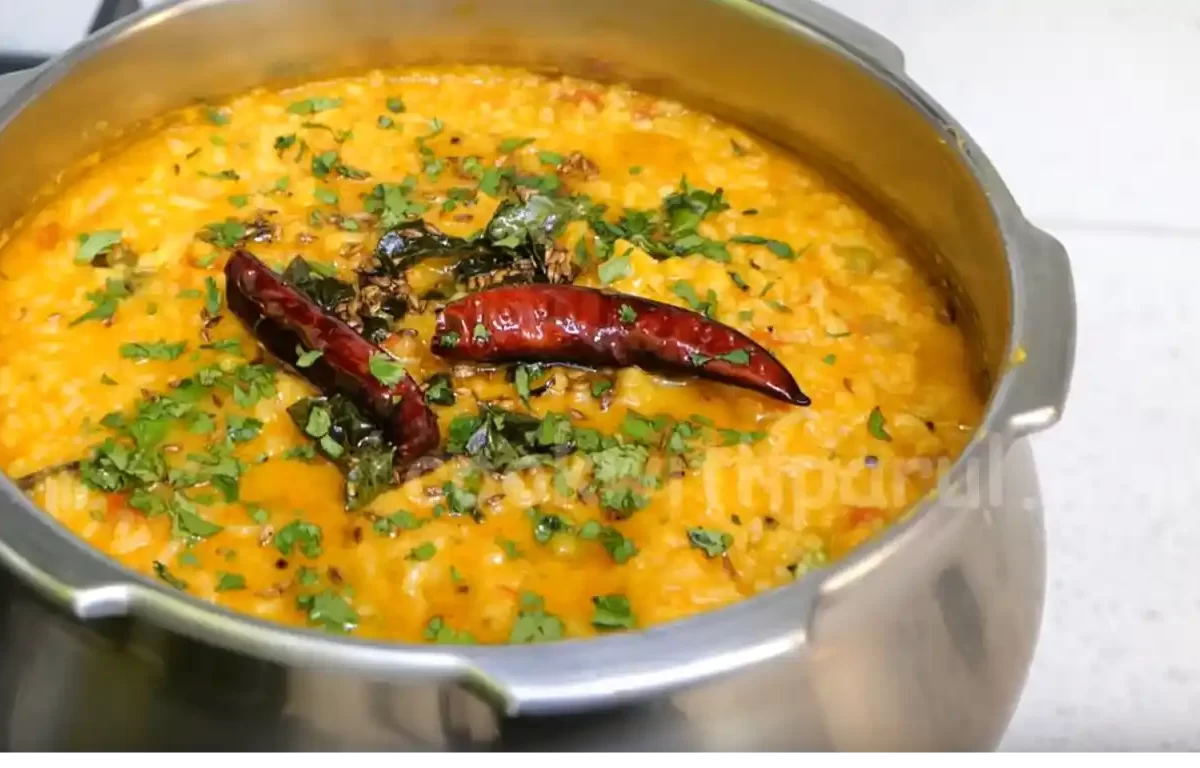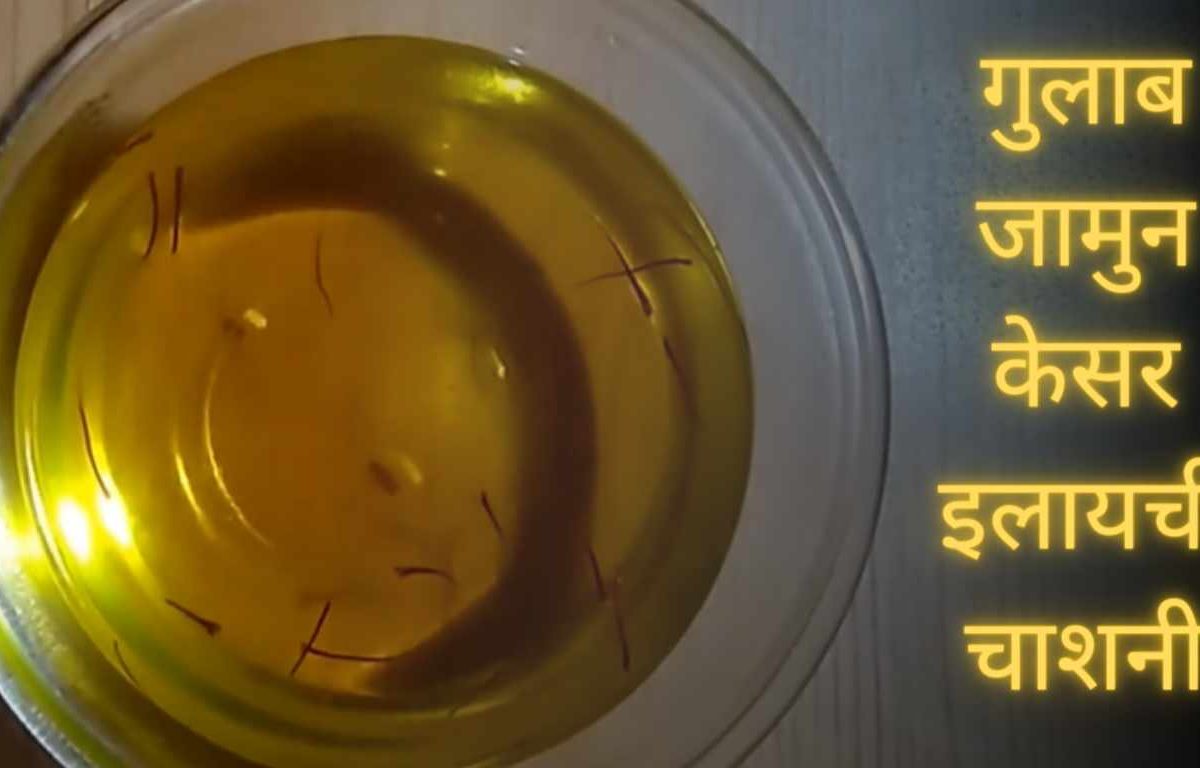Are you looking for a new and exciting vegetarian dish to add to your repertoire? Then you are at the right spot here! This unique curry hails from the northwestern region of India (Bharat) and is made with roasted papads (poppadums), a variety of spices, and yogurt. The result is a flavorful and satisfying R that is perfect for a anytime meal.
What is Rajasthani Papad ki Sabzi?
- What is Rajasthani Papad ki Sabzi?
- Why You Should Try Rajasthani Papad ki Sabzi
- Ingredients for Rajasthani Papad ki Sabzi
- Step-by-Step Recipe for Rajasthani Papad ki Sabzi
- Tips for Making Rajasthani Papad ki Sabzi
- Pairing and Serving Ideas for Rajasthani Papad ki Sabzi
- Variations of Rajasthani Papad ki Sabzi
- Beyond the Recipe – Interesting Facts about Papad ki Sabzi
- Finishing up
- Recipe FAQs
- More with Love
Papad ki Sabzi is a traditional Rajasthani dish made with roasted papads, cooked in a flavorful gravy of spices and yogurt. It is a simple yet delicious dish that is perfect for any occasion.
Why You Should Try Rajasthani Papad ki Sabzi
There are many reasons why we should try Rajasthani Papad ki Sabzi.
- Unique and flavorful: The combination of roasted papads, spices, and yogurt creates a unique and delicious flavor that we won’t find in any other dish.
- Easy to prepare: This dish is made with simple ingredients and can be easily prepared at home in under an hour.
- Vegetarian: Papad ki Sabzi is a great option for vegetarians and vegans.
- Healthy: This dish is packed with protein and fiber from the papads, and the yogurt provides a good source of probiotics.
| Preperation Time | 10 mins |
| Resting / Marination | 20 mins |
| Total Time | 30 mins |
| Serves | 4 people |
Ingredients for Rajasthani Papad ki Sabzi
For the roasted papads
-
- 4 roasted papads/poppadums

For the gravy
- 3 tbsp vegetable oil
- ½ tsp cumin seeds
- Pinch of asafoetida
- 4 garlic cloves, roughly chopped
- 1 inch ginger, roughly chopped
- 1 small green chili, deseeded (optional)
- 100 gms tomato, roughly chopped
- 1 tbsp tomato puree
- 1 tbsp coriander powder
- 1 tsp turmeric powder
- 1 tsp Kashmiri chili powder (or mild paprika)
- 250 gms Greek yogurt, whisked
- 300 ml water
- 2 tbsp kasoori methi/dried fenugreek leaves
- Salt to taste
- Coriander leaves for garnish
Step-by-Step Recipe for Rajasthani Papad ki Sabzi
Roasting the Papads
- You can roast the papads in three ways:
- On the stovetop: Heat a dry pan over medium heat. Place the papads in the pan and cook for a few seconds per side, or until they are lightly browned and puffed.
- In the microwave: Place the papads on a microwave-safe plate and microwave for 30-60 seconds, or until they are lightly browned and puffed.
- In the oven: Preheat the oven to 350°F (175°C). Place the papads on a baking sheet and bake for 5-7 minutes, or until they are lightly browned and puffed
Preparing the Gravy
- We will heat oil in a heavy-bottomed saucepan over low heat. Now we will add cumin seeds and asafoetida and fry for a few seconds.
- To this we will add the garlic, ginger, and green chili (if using) and fry for 20 seconds.
- Let’s add the blended tomatoes and cook for 6 minutes, stirring well.
- As the oil leaves the sides of the pan, we now add the powdered spices and fry for 1 minute.
- Now adding the yogurt a little at a time and stir well. We will let it cook on low heat and stir for 3-4 minutes.
- Add the water, season to taste with salt, and simmer for 6-8 minutes.
- Add the fenugreek leaves and roasted papads to the gravy.
- Cover and cook for 2 minutes on low heat.
- Garnish with coriander leaves and serve hot with roti or rice.

Tips for Making Rajasthani Papad ki Sabzi
- For a richer flavor, we can use ghee instead of vegetable oil.
- If we don’t have kasoori methi, we can substitute it with 1/2 teaspoon of ground fenugreek seeds.
- Adjust the spice level: This recipe uses Kashmiri chili powder, which is mild. If we prefer a spicier dish, we can use regular chili powder or add a chopped green chili to the gravy.
- For a thicker gravy: We can add 1 tablespoon of cornstarch mixed with a little water to the gravy while it is simmering.
- Leftovers: Papad ki Sabzi tastes even better the next day. We can always store leftovers in an airtight container in the refrigerator for up to 3 days.
Pairing and Serving Ideas for Rajasthani Papad ki Sabzi
Papad ki Sabzi is a versatile dish that can be enjoyed with a variety of sides. Here are some pairing and serving ideas:
- Roti or rice: These are the most common accompaniments to Papad ki Sabzi.
- Dal: A bowl of dal makes a complete and satisfying meal.
- Raita: A cooling raita, such as cucumber raita or mint raita, is a perfect complement to the spicy curry.
- Salad: A simple salad adds freshness and crunch to the meal.
- Pickles: Papad ki Sabzi pairs well with a variety of pickles, such as mango pickle or lime pickle.
Variations of Rajasthani Papad ki Sabzi
While the basic recipe for Papad ki Sabzi remains the same, here are some exciting variations we can try to add our own twist to the dish:
Vegetable Papad ki Sabzi: We can add chopped vegetables like onions, carrots, peas, or green beans to the gravy while sauteing the ginger and garlic. This adds another layer of flavor and texture to the dish.
Sprouted Papad ki Sabzi: We can also use sprouted papads instead of roasted ones for a healthier and more nutritious option. Make sure to soak whole urad dal overnight, sprout them, and then dry them in the sun or a dehydrator. Roast the sprouted dal like regular papads and use them in the recipe.
Coconut Papad ki Sabzi: This is a new twist; we can add some coconut milk to the gravy for a richer and creamier texture. Adjust the amount of water accordingly. We can also garnish the dish with grated coconut for an extra touch.
Dry Papad ki Sabzi: This version skips the gravy altogether and focuses on the roasted papads. Saute onions, tomatoes, and spices in oil, then add roasted and crushed papads. Mix well and serve hot with chopped coriander leaves.
Spicy Papad ki Sabzi: For those who love it hot, increase the amount of chili powder or add chopped green chilies to the gravy. You can also use a hotter variety of chili powder, like cayenne pepper. Feel free to experiment with different spices to personalize the flavor profile of your Papad ki Sabzi. Some interesting additions include garam masala, fenugreek seeds, mustard seeds, or even a pinch of saffron for a luxurious touch.
Beyond the Recipe – Interesting Facts about Papad ki Sabzi
- Papad ki Sabzi is a traditional dish originating from the Marwar region of Rajasthan, known for its arid climate and limited resources. The use of readily available papads and simple spices made this dish a resourceful and flavorful option for everyday meals.
- This dish is not only delicious but also considered to be quite healthy. Papads are a good source of protein and fiber, while yogurt provides probiotics and essential nutrients.
- Papad ki Sabzi is a popular dish during festivals and celebrations in Rajasthan. It is often served alongside other regional delicacies like dal baati churma and laal maas.
Finishing up
Rajasthani Papad ki Sabzi is a versatile and delicious dish that offers endless possibilities for customization. With its simple ingredients and unique flavor profile, I am sure this dish will become a favorite in your kitchen. So, don’t hesitate to experiment, explore different variations, and enjoy this culinary gem from the vibrant land of Rajasthan!
Recipe FAQs
Can I make Papad ki Sabzi without yogurt?
While yogurt adds a unique creaminess to the dish, we can substitute it with coconut milk or cashew paste for a vegan option. However, the taste and texture might differ slightly.
Can I use different types of papads for this recipe?
Yes, we can experiment with various papad flavors like garlic, cumin, or pepper. However, the cooking time might vary slightly depending on the thickness of the papads.
Where did Papad ki Sabzi originate?
It looks like Papad ki Sabzi originated from the Marwar region of Rajasthan, known for its arid climate and limited resources. The dish reflects the resourceful use of readily available ingredients like papads and spices.







